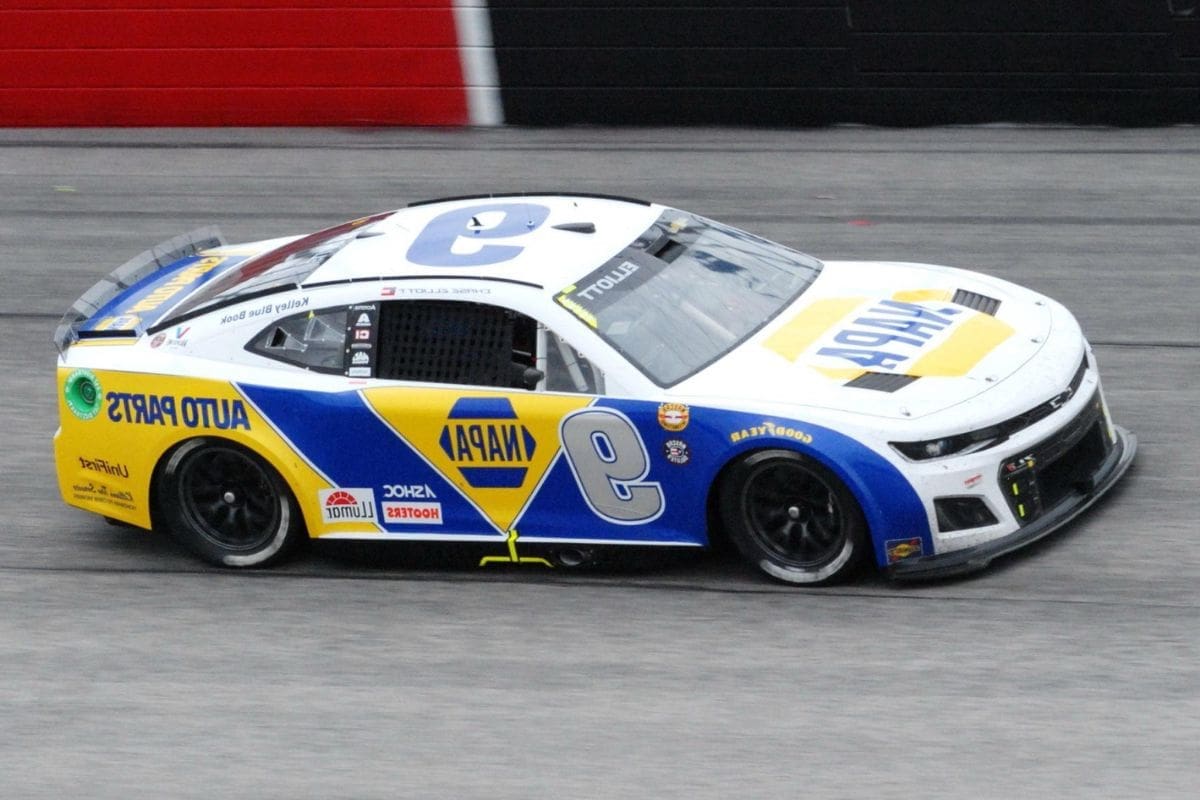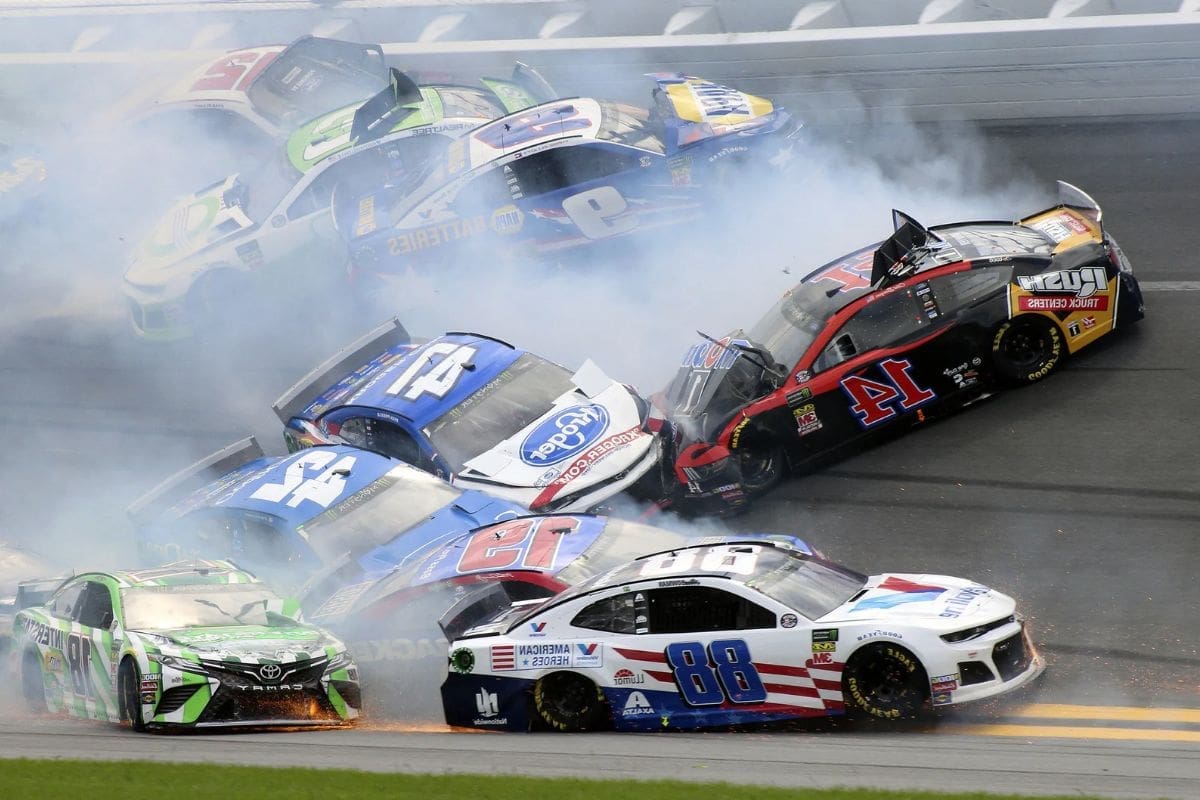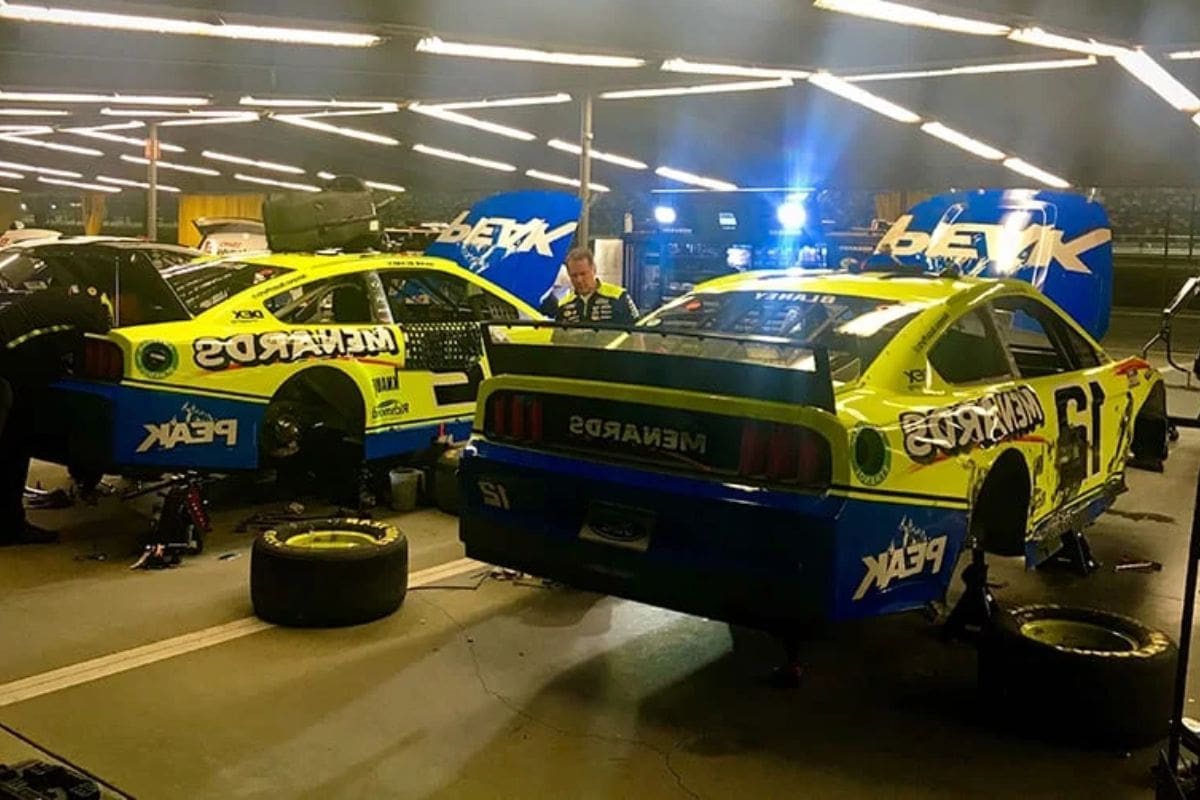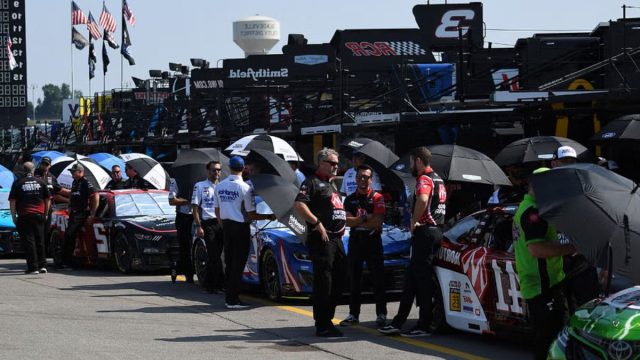Role of Backup Cars in NASCAR: In the high-speed world of NASCAR, where split-second decisions can make or break a race, the role of backup cars remains an intriguing and often overlooked aspect of the sport.
Behind the scenes, teams meticulously strategize and prepare for the unexpected, ensuring they have a backup car ready to go at a moment’s notice.
But what exactly is the significance of these backup cars? How do teams make strategic decisions regarding their use? And what happens to these cars once they have fulfilled their duty?
In this discussion, we will dive into the fascinating world of backup cars in NASCAR, shedding light on the strategy and intricacies that lie beneath the surface of this exhilarating sport.
Key Takeaways
- Backup cars are essential in NASCAR as they allow drivers to continue racing when their primary car gets damaged.
- Teams make strategic decisions on when to switch to a backup car, considering factors such as the extent of damage and resource availability.
- Inspection and acclimatization of backup cars ensure they are in optimal condition and drivers are familiar with their handling characteristics.
- Wrecked backup cars are evaluated and, if necessary, become the new primary car, while a new backup car is prepared for the driver.
The Significance of Backup Cars in NASCAR
The significance of backup cars in NASCAR cannot be underestimated, as these meticulously inspected vehicles play a crucial role in the high-stakes world of intense racing where collisions are a common occurrence.
In NASCAR, where drivers reach speeds of over 200 miles per hour, accidents are bound to happen. When a primary car gets damaged, teams rely on their backup cars to ensure their drivers can continue the race. These backup cars undergo rigorous inspection to meet NASCAR’s stringent safety standards, ensuring that they are ready to hit the track at a moment’s notice.
Without backup cars, teams would be left scrambling to make repairs or find replacement vehicles, potentially jeopardizing their chances of victory. Thus, backup cars not only provide a safety net for drivers but also enable teams to maintain their competitive edge in this highly competitive sport.

Strategic Decision-Making
Teams carefully consider various factors before making strategic decisions about switching to a backup car in NASCAR. This decision-making process involves weighing the benefits and drawbacks of abandoning the primary car and starting from the back of the field.
Here are four key considerations teams take into account:
- Extent of damage: Teams assess the extent of damage to the primary car to determine if it is repairable within a reasonable timeframe. If the damage is severe and cannot be fixed quickly, switching to a backup car becomes a viable option.
- Track position: Switching to a backup car means forfeiting track position and starting from the back of the field. Teams evaluate the importance of track position and the potential impact on their overall race strategy.
- Backup car readiness: Teams ensure that the backup car is in optimal condition and ready to perform at a competitive level. This involves checking its mechanical components, aerodynamics, and overall setup.
- Resource availability: Teams consider their available resources, including spare parts, crew members, and equipment. If they have the necessary resources to support the backup car, it becomes a more feasible option.
Through a meticulous evaluation process, teams make strategic decisions about when to switch to a backup car, always aiming to maximize their chances of success on the track.
Thorough Inspection and Acclimatization
During the thorough inspection and acclimatization process, drivers must familiarize themselves with the backup car, a task that requires precision and efficiency, especially considering the limited time available during a race weekend.
Master builders and skilled engineers in the garages play a pivotal role in ensuring that backup cars are race-ready. These professionals meticulously inspect every aspect of the vehicle, from the engine to the suspension, to ensure optimal performance on the track.
Additionally, drivers must acclimatize themselves to the backup car’s handling characteristics, which may vary from their primary car. This involves spending valuable time on the track, testing and fine-tuning the backup car’s setup to match their driving style.
The inspection and acclimatization process is essential to guarantee that drivers are prepared for any unforeseen circumstances that may require them to switch to their backup car during a race.

Fate of Wrecked Backup Cars
Given the meticulous inspection and acclimatization process that drivers undergo with their backup cars, it is crucial to understand the fate of these vehicles in the unfortunate event of a crash during a race. When a backup car gets wrecked, the following scenarios unfold:
- The car is towed off the track: As the wrecked backup car is no longer drivable, it is promptly removed from the track using a tow truck.
- Transported back to the team’s garage: Once off the track, the damaged backup car is loaded onto a flatbed truck and transported back to the team’s garage for further evaluation.
- Assessment and repairs: The team’s crew members thoroughly examine the wrecked backup car to assess the extent of the damage. They then commence the necessary repairs to get the car back in race-ready condition.
- Backup car becomes primary: If the primary car is deemed irreparable, the backup car becomes the new primary car for future races, and the team must prepare a new backup car for the driver.
In the unfortunate event of a crash, the fate of a wrecked backup car depends on the severity of the damage and the team’s ability to restore it to its former glory.
Substitute Driver Rule
In NASCAR, the Substitute Driver Rule allows for the seamless transition of drivers in situations where the original driver is unable to continue due to injury, personal reasons, or other circumstances. This rule ensures that the race can go on without major interruptions, providing fans with continuous action on the track. To better understand the impact of this rule, let’s take a look at a few examples:
| Driver | Reason for Substitution | Substitute Driver |
|---|---|---|
| Tony Stewart | Injury | Max Papis |
| Tony Stewart | Injury (further) | Austin Dillon |
| Tony Stewart | Injury (further) | Mark Martin |
| Brad Keselowski | Personal | Cole Custer |
These instances demonstrate how the Substitute Driver Rule allows for a backup driver to step in and compete in place of the original driver. Whether it’s due to an injury or personal reasons, this rule ensures that the race continues and fans can still witness thrilling NASCAR action.
Conclusion of Role of Backup Cars in NASCAR
Backup cars play a crucial role in NASCAR as they provide teams with a strategic advantage. Through careful decision-making and thorough inspection, teams ensure that backup cars are ready to take the track if needed.
While wrecked backup cars may face an uncertain fate, the substitute driver rule allows teams to quickly adapt and continue competing. The use of backup cars exemplifies the strategic nature of NASCAR and highlights the importance of preparation and adaptability in this high-stakes racing sport.

Our Reader’s Queries
Q. Do Nascar drivers have backup cars?
A. In NASCAR, each hauler transports two cars: a primary car and a backup car. The primary car is the one that the team anticipates will perform the best on race day, while the backup car serves as a contingency in case the primary car sustains damage during practice runs or encounters any issues. This setup ensures that teams are prepared for any unforeseen circumstances and can quickly adapt to ensure they have a competitive entry for the race.
Q. Why do Nascar drivers drive behind each other?
A. On high-speed ovals and superspeedways utilized by NASCAR and ARCA, the aerodynamic drafting effect comes into play. When two or more vehicles align in a front-to-rear formation, they can achieve higher speeds collectively compared to a single car racing alone. This drafting technique allows the trailing cars to benefit from reduced air resistance, increasing their overall speed and promoting close, competitive racing. Teams strategically use drafting as a tactical advantage, particularly on tracks where aerodynamics play a significant role in performance.
Q. Does NASCAR have spare cars?
A. In a NASCAR race weekend, teams have multiple on-track sessions, including practice and at least one qualifying session before the main race. If a car is involved in a crash or encounters significant issues during any of these sessions, teams are prepared with a backup car. The backup car is a spare vehicle that can be quickly deployed to replace the damaged or compromised primary car. This ensures that teams are ready to participate in all scheduled activities and the main race, even if unforeseen incidents occur during practice or qualifying.
ALSO READ: Choose Rule in NASCAR: A Strategic Shift on the Track
